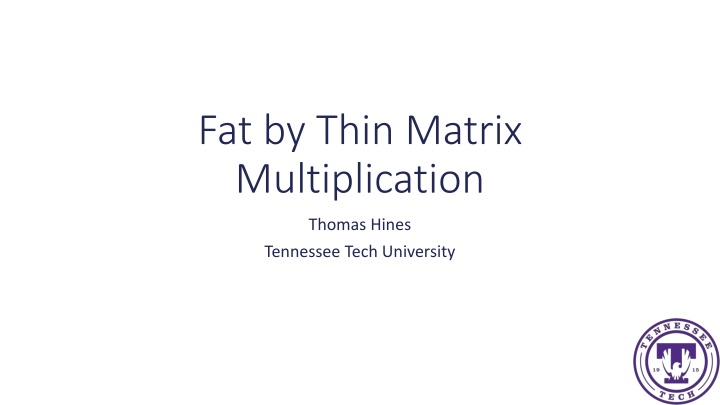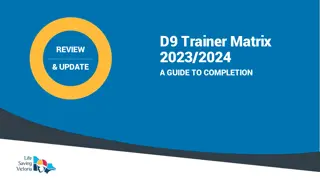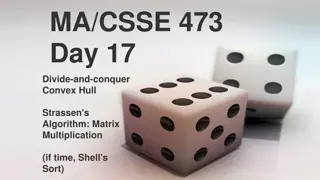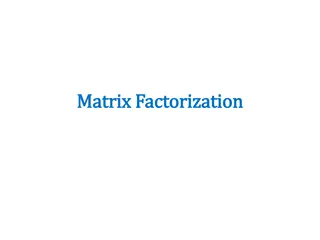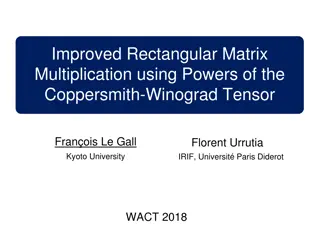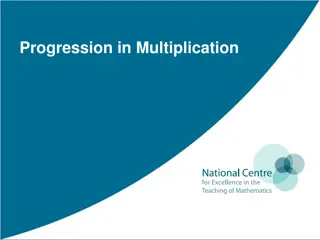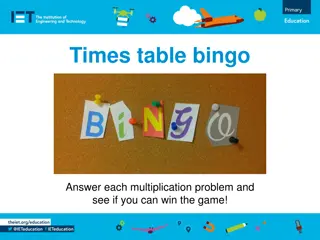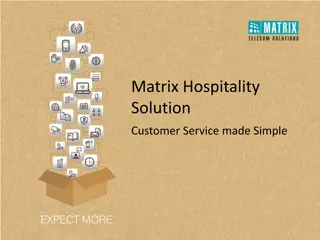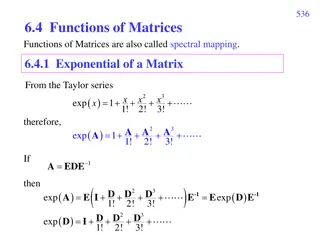Insights into Matrix Multiplication Performance Optimization
Explore the performance of matrix multiplication with fat and thin matrices using experimental setups with different hardware configurations. Evaluate single-threaded versus multi-threaded performance and strategies for enhancing performance in the fat-by-thin region.
Download Presentation

Please find below an Image/Link to download the presentation.
The content on the website is provided AS IS for your information and personal use only. It may not be sold, licensed, or shared on other websites without obtaining consent from the author.If you encounter any issues during the download, it is possible that the publisher has removed the file from their server.
You are allowed to download the files provided on this website for personal or commercial use, subject to the condition that they are used lawfully. All files are the property of their respective owners.
The content on the website is provided AS IS for your information and personal use only. It may not be sold, licensed, or shared on other websites without obtaining consent from the author.
E N D
Presentation Transcript
Fat by Thin Matrix Multiplication Thomas Hines Tennessee Tech University
Fat and Thin Matrices Fat Few rows and many columns Thin Many rows and few columns Fat by Thin k >> m , n C is very small compared to A and B = *
Experimental Setup Ivybride node and Broadwell node Ivybridge E5-2680v2 x 2 with 20 total cores Broadwell E5-2680v4 x 2 with 28 total cores Library versions Intel MKL 2019.0.3 BLIS 0.5.1 OpenBLAS 0.3.6 Call DGEMM Best of 10 runs
Experimental Setup Sweep from fat by thin to square Start: (m, k, n) = (64, 16 777 216, 64) End: (m, k, n) = (4096, 4096, 4096) Kept the total number of multiplications constant ? ? ? = 40963 Rough performance predictor Time to load A and B from RAM + time to multiply
Ivybridge 20 threads sweep Graph of ivy_bridge sweep
Broadwell 28 threads sweep Graph of Broadwell sweep
Multi-threaded vs Single threaded The next step is to look at single threaded performance But what if a global resource is the bottleneck? RAM bandwidth Run a single threaded DGEMM on each core at the same time
Rough Fix Single threaded performance is high in the fat by thin region Turn the multiplication into independent smaller multiplications Split A and B in the k dimension Adds extra work Extra memory for temporary C s Sum reduction of the temporary C s However, C is small
BLIS Loop Multi-threading Ivybridge with 20 threads parallelizes the loops as: 1, 1, 10, 2, 1 The third loop partitions in the m dimension If m=64, then the effective ?? is 6.4 (rounds to 8) =sliver of The preferred ?? size is 96 ?? will be smaller than the preferred size when m<960
Duplicate-C BLIS Loop Multi-threading The loop threading is effectively 1, 20, 1, 1, 1 Not identical no synchronization The third loop is not parallelized Effective ?? is roughly 10x larger for small m
Potential Modifications Simple Switch point to swap to alternative loop threading. Complicated Determine loop threading based on m, k, and n. In both cases the 2nd loop needs to be parallelizable
